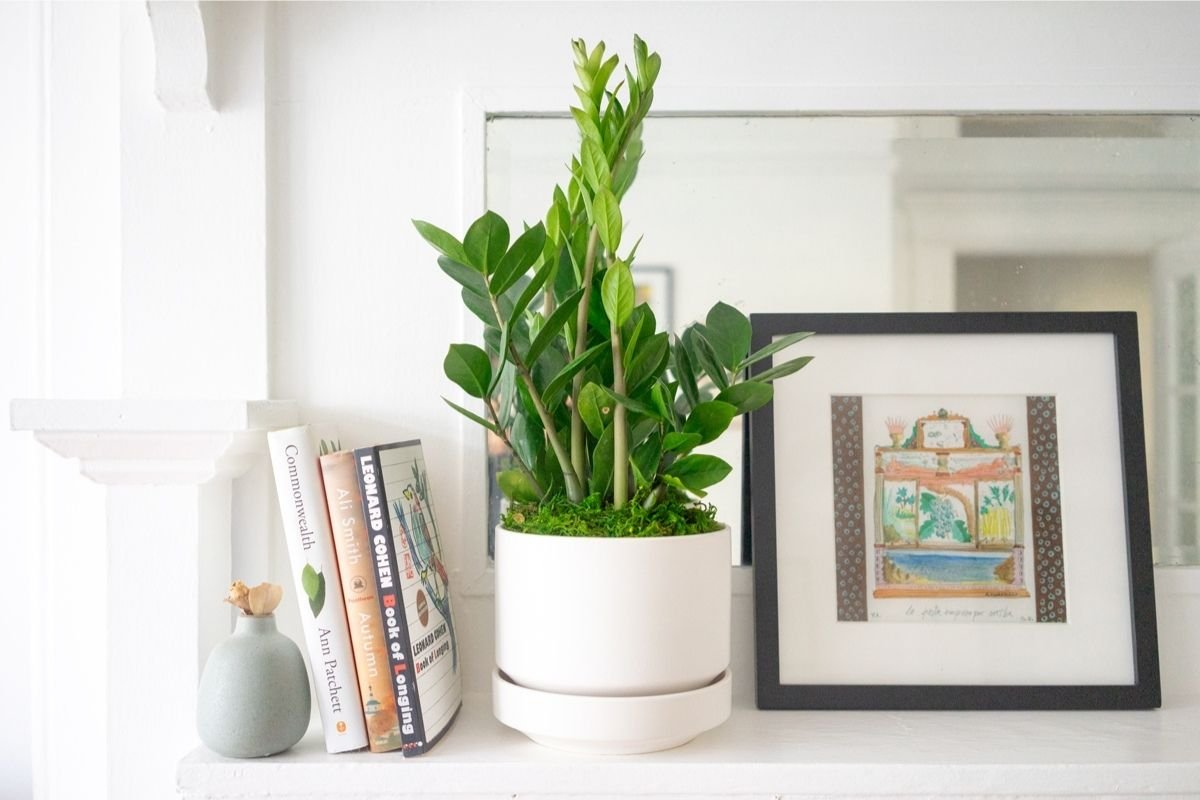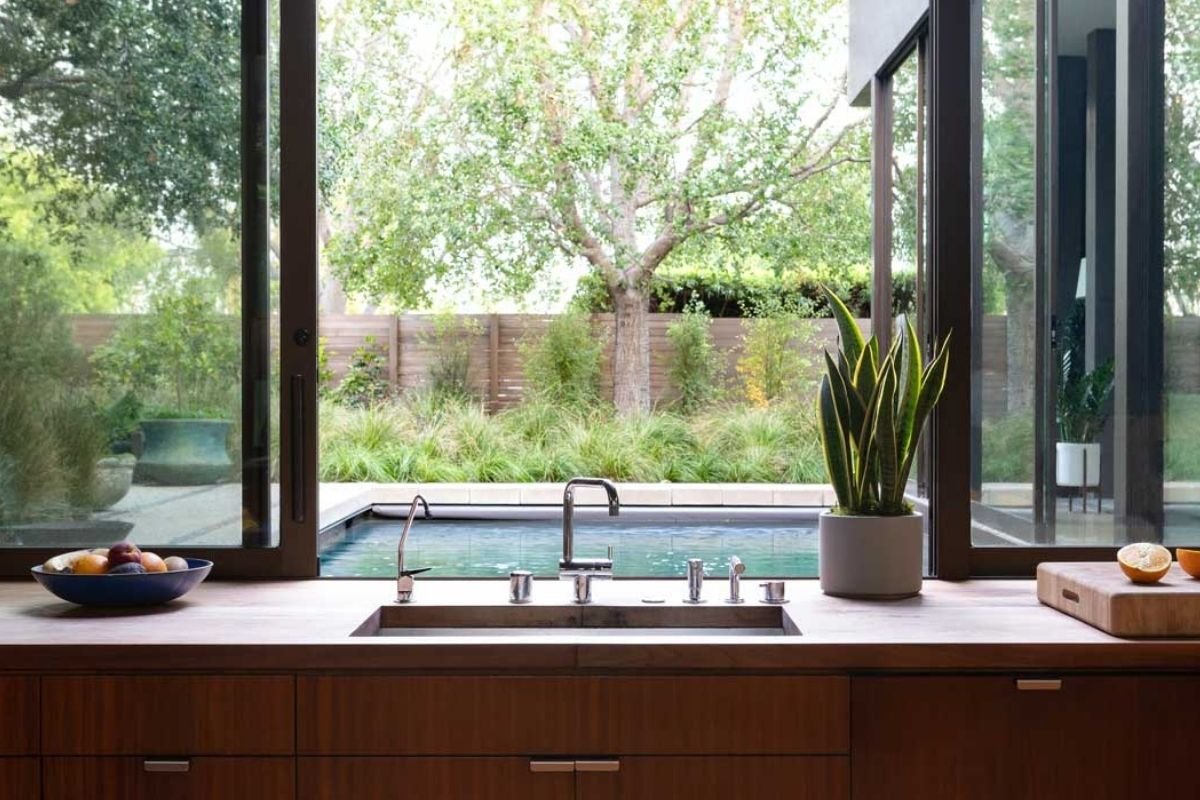Perennials are a mainstay for outdoor gardens, but there’s no reason to deprive your indoor space of blossoming flowers! And although wrapping your head around perennial flowering plants can seem a little confusing at first, it’s actually easy to nurture these beauties inside and watch them thrive. There are just a few things to know before you shop for a new perennial, so read on: it’s all right here!
What are perennials?
A perennial plant is a plant that lives longer than an annual year. It’s a familiar term for outdoor gardeners, who may plant both annuals (plants that only live for one year, then die) and perennials (which live for years and bloom yearly, if not even more frequently than that). The term “perennial” typically refers to flowering plants that produce blooms, and those are the perennial varieties we’ll be discussing here.
What are the best perennials for indoor spaces?
We think that the best perennial plants to buy for an indoor space are the ones that require the least care! The perennials we offer at Léon & George were curated specifically for their easy care disposition and for the vibrancy of their blossoms- which is typically what people are looking for when they’re shopping for a perennial. Calandivas, or Kalanchoe varieties, are a great option because they are perennial succulents. That means that as long as they get lots of light, and are watered only sparingly, they’ll be happy. We offer both white, or Snowdrop Calandivas, and yellow, or Sunshine Calandivas. Other great options for low-maintenance perennials are Anthuriums, like the King of Hearts and Queen of Spades Anthurium. Their flowers are technically spathes (neither a flower nor a leaf, but rather a sheath that protects the plant’s flower). Spathes maintain their beautiful coloration longer than blossoms.
What kind of light do indoor perennials require?
Most perennials require ample light in order to induce blooming, and indoor perennials are no exception. Indoor perennials should receive abundant, bright sunlight. Consult a light guide to determine the level of light that your space receives. Indoor perennials want all the light they can get!
It’s important not to overwater your perennial
Plants use the water that they receive much more slowly indoors than outdoors, because they receive less sunlight in enclosed spaces. It’s crucial not to overwater indoor perennial plants for this reason. They can become waterlogged, which will result in their blossoms and spades getting soggy, darkening and falling off.
You can use a moisture meter as a supplemental tool to support your watering routine. They’re a great way to keep an eye on moisture levels in between manual checkups, and are easy to read. Simply check the moisture meter’s window: if it is white, the plant is ready for water, and if it is blue, the soil is still moist and does not need watering.
But overwatered perennials can be rehabilitated
It happens on occasion: despite best efforts, we find that our indoor plants have been overwatered. Luckily, there’s an easy set of steps to rehabilitate overwatered indoor perennials.
First things first: you’ll need to get the perennial away from the “wet.” That means removing it from its pot and dumping out any standing water that may have accumulated.
Secondly, trim off any parts of the plant that appear seriously waterlogged, mushy, or discolored. It can feel dire to perform minor surgery on your flowering plant, but indoor perennials actually love it. Trimming off unhealthy parts of the plant sends it a big signal to push out healthy new growth, and trimming or plucking off old blossoms will encourage the plant to push out new flowers.
Once you have trimmed the perennial of any areas that have lost viability due to overwatering, let the plant dry out. You don’t need to place the plant back in its pot for now- just place it in a spot that receives lots of bright light, but isn’t in the direct patch of scorching rays. The goal is to dry the plant out, not sunburn it. After a couple days of generous light, you should see the plant’s soil dry out entirely.
At this point, you should have a nice, dry plant on your hands. You can return it to its pot, and after a few days of acclimation, resume your watering routine. This time, with a lighter touch!
Exercise caution when misting your perennial
This may come as a surprise because, as a general rule, most indoor plants appreciate a nice misting. Indoor plant varieties are often native to humid, tropical climates, and misting helps to imitate the moist biome that they’re accustomed to. But indoor perennial plants are a bit different in this regard. Why? Because of the flowers.
Flowers and spathes are delicate, and when water sits on the surface of blossoms or spathes for a prolonged amount of time, it can cause discoloration- typically in the form of browning. Because it’s easier to overdo misting rather than to have too light a touch, you can forgo misting altogether as a precaution. Not to worry- your plant can still absolutely thrive. Ample sunlight and appropriate watering are what are really key to their health.
Will perennial flowers stay fresh forever?
Great question, and we’re glad you asked! The answer here is no: as is the case with so many of nature’s creations, when it comes to perennial flowers, “nothing gold can stay”. But don’t let that put you off: the magic of perennials is that they will blossom and blossom again with appropriate care.
No individual flower is forever: their purpose is to help the plant reproduce through seeds and pollination. But perennial plants can blossom regularly, so you’re not limited to only one bumper crop of blooms from a Calandiva or Anthurium. The key to encouraging your perennial plant to blossom year-round is to pluck or trim its flowers off once they have begun to brown. Again, this signals to the plant that it is time to direct its energy toward growing new flowers.
A note on toxicity in indoor perennials
Indoor perennial plants like Calandivas and Anthuriums are considered to be toxic. We know, we know- it’s frustrating. But it’s simply science at work: a trait that the plant has evolved over time to deter wild animals from snacking on them. Still, it is important to consider toxicity if you live with curious kids or pets. And if toxicity is an absolute no-go, don’t panic: you still have options!
How to select a thriving, gorgeous perennial
There are always a few things to check up on as you shop to make sure you pick the perfect plant specimen for your home. When it comes to flowering perennial plants, you’ll want to look at the plant’s blossoms. A plant that is covered in mature, gorgeous blooms will look gorgeous for a spell- but because its blooms will already be older at the time you buy it, they will also brown sooner. Don’t be afraid to buy a perennial that has lots of buds that have not yet bloomed- they’re on their way!
Carefully inspect the overall foliage of the perennial, looking especially for signs of overwatering, illness and pests. A healthy perennial plant will have vibrantly colored leaves and foliage, without significant yellowing leaves or discoloration. Additionally, the leaves, stems and trunks of healthy plants will have a firm texture and strong limbs, and will not appear floppy or exhausted.
Avoid purchasing your perennial from a garden center
Once you’ve decided to buy your new perennial, it’s important to ensure that you purchase one that will thrive for years to come. After all, they’re not annuals!
Our recommendation when shopping is always to opt for a premium grower rather than a lower price tag. Stores like garden centers and home improvement stores often appear to offer low prices and convenience, but we ultimately find that purchasing plants of a sub-par quality results in a higher cost and less convenient experience overall. There are a few reasons for this:
Garden centers and home improvement stores tend to provide the same kind of care to all of their plants, regardless of the specific needs of the plants’ species. This means that many plants are overwatered during their time at these stores, and are often receiving light that’s inappropriate for their particular requirements.
Additionally, It is almost impossible to know the plant care routines that these businesses have in place from the outset, but it’s highly common for garden centers to use a one-size-fits-all approach with their plants, and although it saves time for these businesses, treating all plants in the same way is just not conducive to their health.
Purchasing your new perennial plant from a premium grower will help ensure that it has been kept in appropriate light and watered correctly. There is also the issue of insects to consider. Insects have a habit of hopping from plant to plant, and funguses and viruses tend to spread- so if you cannot guarantee that the business you’re buying your new hanging plant from treats pests and plant diseases both prophylactically and as needed, there is a chance of bringing a pest or disease-ridden plant into your space, where those issues can (and often do!) spread to other plants in their vicinity.
And finally, there is the issue of transport. Plants are resilient and strong, but no living plant loves the experience of transportation or significant environmental shifts. And flowering plants like indoor perennials are more delicate than most: they’re covered in fragile blossoms.
There are many factors at play when it comes to moving a plant from Point A to Point B: fluctuations in light, the risk of structural and foliage damage, and the risk of stress from temperature changes and forced air from A.Cs. Going to the extra mile to ensure the safe transit of your new perennial will pay dividends over time. By purchasing your plant from a business that offers doorstep delivery, and/or ships using packaging that is custom-engineered for plants, you can simply rest easy and enjoy the confidence of knowing that your plant has been amply protected and well cared for. Then lean back, and enjoy the blooms!
Even the healthiest perennial can experience stress from time to time
Stumbles can happen along the path of any plant parenthood journey. The good news? Every plant purchased from Léon & George comes with lifelong access to our Plant Doctor service: a team of expert horticulturalists, here to offer assessments, tips and adjustments, and to generally support you as you care for your plants. There’s no catch! No fees are required to enjoy this service. Free, lifelong access to the Plant Doctor service is just one of the ways that we work together to support plant owners as we green up the world together.
We’ve compiled a list of common problems that indoor perennials can face, as well as helpful guidance for assessing your plant’s health. Informed and supported plant parents are the key to our success! Click here to learn more about how to care for and grow your new perennial.
Explore the flowering Snowdrop Calandiva
A gorgeous perennial succulent with abundant, cloud-white blossoms, the Snowdrop Calandiva is the perfect accent for indoor spaces that receive ample, bright sunlight. Easy to care for and incredibly charming, the Snowdrop Calandiva will bloom for years. All it needs is love and light!














